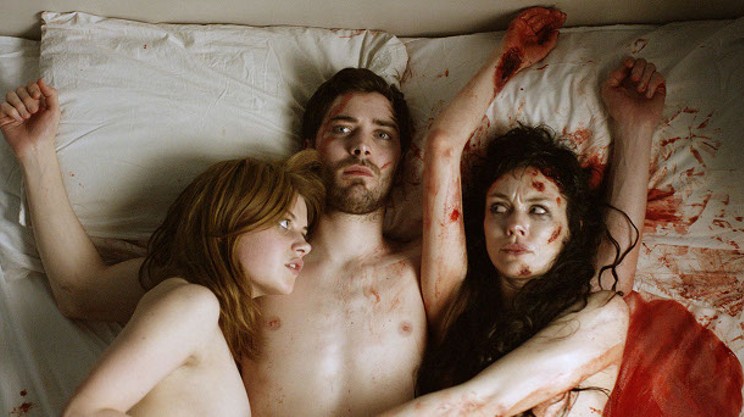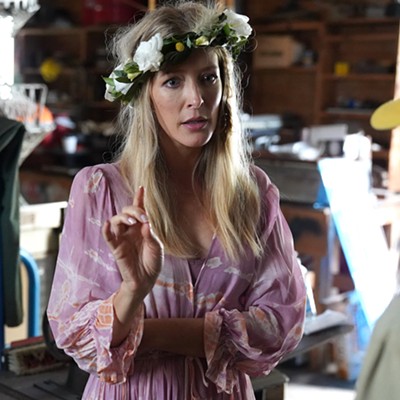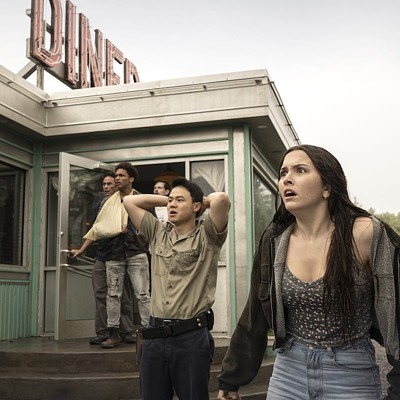When Animals Attack Matthew McConaughey has been released under the title Failure to Launch. Remembering that half the equation of a romantic comedy is humour, the filmmakers fill the downtime between story points with Trip (McConaughey) being bitten by a dolphin, a chipmunk and a lizard. So audiences don’t call out this repetition, the device is eventually justified as a manifestation of Trip’s imbalance with nature.
@body alt:Let’s backtrack: Trip is imbalanced with nature because he’s a 35-year-old man who lives in his parents’ home. His parents (Kathy Bates and Terry Bradshaw) hire Paula (Sarah Jessica Parker) to pretend to fall in love with Trip, thus giving him the drive (or something) to move out.
The premise is a variation of McConaughey’s equally deluded 2003 film How to Lose a Guy in 10 Days. The deception makes Paula generally awful, when the couple’s inevitable romantic spark needs to feel organic. Even McConaughey’s stay-at-home situation isn’t exploited for funny insight. His friends all live with their folks too—a stretch that reveals Failure to Launch isn’t grounded in anything.
Rather than address how personal idiosyncracies struggle in relationships, Failure to Launch exists in an appalling fantasy world of compliance. It views growing up as the determination to join the status quo. That’s why everybody in it is rich, white and stupid. It likely hasn’t occurred to director Tom Dey that pimping exclusionary, petty ideology in media may be partly why nature is imbalanced.
The Hills Have Eyes
The antidote to Failure to Launch comes from a film that confronts social breakdown with thought and excitement. Alexandre Aja’s remake of the early Wes Craven shocker The Hills Have Eyes is the best entry in The New Sadism—a term I’ve coined for the new breed of extreme horror movies. The mass popularity of Saw II and Hostel show horror movies are no longer an outsider art. Screen torture is now the prevalent culture. That doesn’t stop Aja from taking defiant swipes at our bloodlust.
@body alt:Saw II and its ilk are works by filmmakers who get off on gory shocks, but discourage understanding of genre. Aja really gets it. His movie is everything great horror used to be: disturbing, outrageous, subtextual and (don’t run from it) morally aware. He’s also more stylistically exciting than Craven. The remake builds on the original’s primitive appeal while amping the tension and allegory.
A family gets stranded in the desert on their way to San Diego. Nothing in the hippie-turned-Republican parents’ nor their more liberal-minded kids’ worldview prepares them to accept the hideously deformed cannibal clan that preys upon them at night. The cannibals are the result of societal exile and nuclear testing. We make our own monsters, a theme that goes back to classics like Frankenstein. A visit to the clan’s village is immediately appalling and lingeringly sad.
If there’s a problem with Aja’s approach, it’s that his outlook is so thoroughly ugly it doesn’t allow itself to be taken too seriously. The red desert cliffs take on a fascinating, otherworldly look over the course of the film. But Craven’s original got the geography better. The distance between the cannibal lair and the family trailer is too indefinite, but Aja has technical skill matched by discomfort over where his film might go next. He’s the greatest threat in horror movies right now.
If it horrifies you, write: [email protected]













